The Canadian Ski Patrol at Work in Headwaters
Every winter, dozens of volunteers take to the ski hills with one goal in mind – to aid injured skiers and snowboarders.
Phil Turgoose vividly recalls the autumn evening more than 45 years ago when his ski poles nearly landed him and his girlfriend in a jam. The couple weren’t on the slopes. They were walking along a Montreal street on their way to a Canadian Ski Patrol training session. The poles would be used to practise making a splint.
But it was 1970, the height of the October Crisis in Québec, and the FLQ – the Front de libération du Québec – had kidnapped two high-ranking government officials. The city was on high alert and armed soldiers were patrolling the streets.
“I was stopped by a soldier with a gun,” says Turgoose, now 66 and living in Amaranth. “Ski poles aren’t exactly lethal weapons, and we were eventually allowed to go, but for a few moments there, it was pretty intense.”
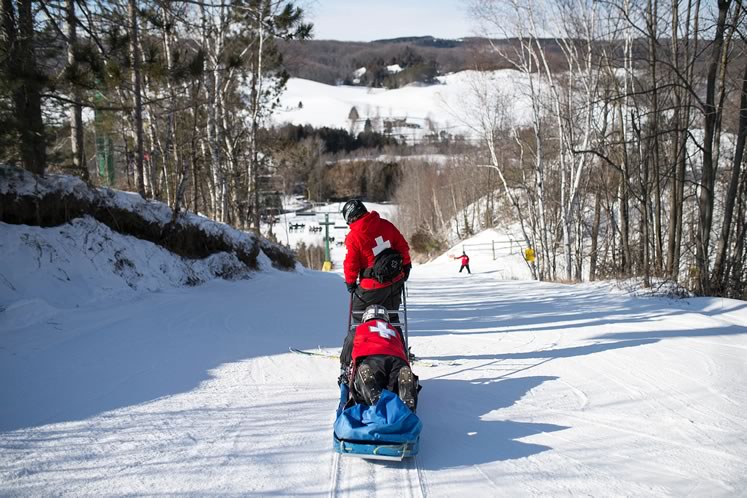
In their distinctive red and white vests, ski patrollers make a run with the rescue toboggan at Hockley Valley Resort. Photo by James MacDonald.
That run-in didn’t deter Turgoose. He volunteered for the Canadian Ski Patrol for two years in Québec before taking a 17-year hiatus to concentrate on career and family. But he returned to it in the late ’80s when his job as an airline systems operations manager took him to Alberta, and he has carried on since coming back to Ontario in 2000.
What drew Turgoose to ski patrol all those decades ago? His parents weren’t skiers, but as a youngster fascinated with the sport, he taught himself to ski in the backyard of the family home in Mont Saint-Hilaire near Montreal.
“It’s hard to put your finger on it,” he says of why he joined. “A desire to help.”
That desire has led to decades of service with the CSP. The former president of the organization’s Ontario Western Zone, which includes Hockley Valley Resort and Caledon Ski Club. Turgoose is also a first aid instructor and trains others.
The CSP dates back nearly 80 years. In 1940, the Canadian Amateur Ski Association asked Douglas Firth, a Toronto osteopath, to organize and train a first aid rescue group to patrol the country’s ski hills. Modelled on the American National Ski Patrol created two years earlier, the patrol was up and running by 1941.
As the CSP’s national president for a dozen years, Firth played a huge role in enhancing ski safety. The many honours he received as a result include the Order of Canada, and skiers at Collingwood’s Blue Mountain Resort will be familiar with the run named for him, the “Dr. Doug.” Firth died in 2001 at age 90.
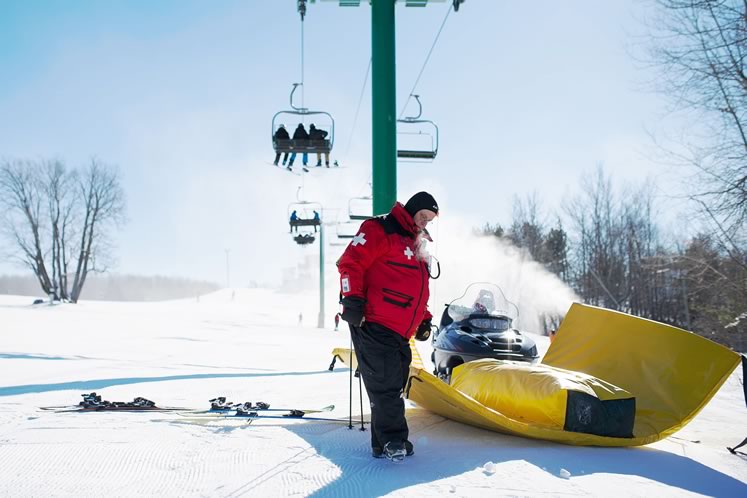
Patroller George Gunn quickly secured a boy injured at the chairlift onto the rescue toboggan. Photo by James MacDonald.
Patrollers were originally trained by the Red Cross and St. John Ambulance, but by 1952, the CSP had produced its own winter first aid manual. It covered specialized rescue techniques not taught by the other groups, including the use of neck braces and back boards to stabilize spinal injuries, administering oxygen, and conducting avalanche search and rescue missions, as well as treating more common skiing injuries such as dislocations, fractures, and head and chest injuries.
The advanced first aid course is now a minimum of 60 hours and includes instruction and practice in administering CPR and oxygen, as well as using a portable defibrillator to treat sudden cardiac arrest. Patrollers must pass written and practical exams and recertify every year.
Following the first aid portion, patrollers take eight hours of on-hill training, including how to deal with emergency scenarios such as evacuating chairlifts and transporting injured skiers on a specially designed fibreglass or Kevlar toboggan. The on-hill training must be repeated every three years.
Patrollers are highly visible on the hill thanks to their signature red, white and black colour scheme, adopted two years ago. Most are volunteers partially compensated through various perks, such as free or reduced-price skiing and food vouchers.
The reduced price is a perk that allows Dennis Henshaw, 50, to give back to the sport he has enjoyed for more than 30 years. He spent his teenage years as a downhill racer on the slopes of Muskoka before choosing hockey over skiing, but when he wanted to return to the slopes as an adult, the CSP benefit helped.
Now the patrol leader at the Caledon Ski Club, Henshaw has a roster of more than 45 active patrollers. On any given shift, especially on weekends, 15 to 20 patrollers may be on the hill. He also has a waiting list of people who want to become patrollers at Caledon, a luxury not a lot of hills can claim.
The Caledon patrollers are split nearly evenly between men and women, and range in age from 18 (the minimum age to qualify for CSP training) to 75. Many are firefighters or paramedics, or are training to become emergency responders. Henshaw notes CSP experience looks great on a résumé.
“The fire service looks for first aid training and all that, but I’ve been told they also look for the ability to think on your feet,” he says. This includes troubleshooting in dangerous situations, such as when a skier is injured in an area difficult to access.
When Turgoose was patrolling in Calgary, for example, a skier fell off the chairlift, broke both heels and suffered kidney trauma.
“I get to this kid, face down in rock hard and icy snow, and the first thing he says to me is, ‘Am I going to die?’” Turgoose recounts. “We had to helivac him, at night, out of the parking lot.”
The Caledon Ski Club is a private facility, and many of the skiers are more skilled than those who ski on public hills, says Henshaw. Still, the club’s patrollers respond to about 75 or 80 incidents a year.
“A place like Mount St. Louis [north of Barrie] and any other larger public resort will do that on a Saturday,” he says. “The skiing culture [at Caledon] is such that you don’t get a lot of the ‘jeans’ crowd, a busload of people coming in who have never skied before.”
Henshaw says a positive attitude goes a long way toward becoming a successful ski patroller. Because patrollers are on the hill all day, they can encounter a range of weather and conditions, from rain and slush to extreme cold. They are allowed a break for lunch, and many hills have a lodge where patrollers can warm up briefly between runs, but there must always be patrollers on the hill.
The number of hours required of patrollers varies, but at Hockley each volunteer is required to log at least 40 during the season, and many log 75 and more – at least 50 daytime hours and another 25 at night.
“We freeze our asses to save yours,” Henshaw says with a laugh. In recent years the CSP has also begun making its services available for patrolling off-season events, such as bike races and trail running, as a way of increasing patrollers’ visibility and earning money to offset the costs of winter patrolling.
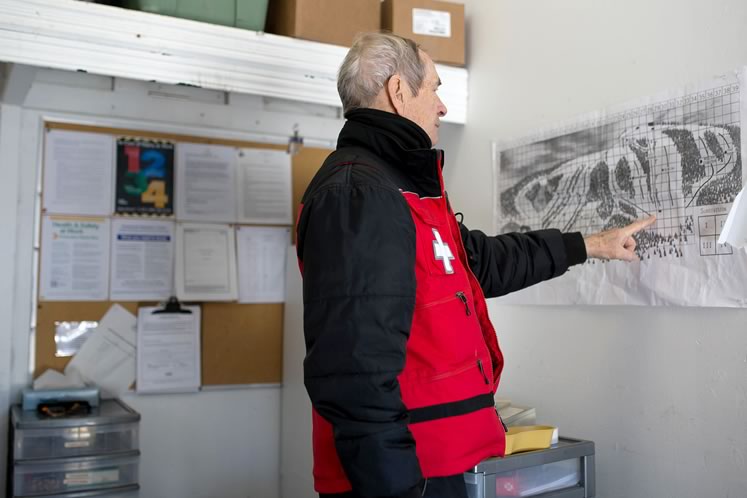
Veteran ski patroller Neil O’Donnell checks a map of the hills at Hockley Resort. Photo by James MacDonald.
A by-product of the sometimes harsh ski conditions is the bond patrollers often form with one another. Freezing together on the side of a mountain or responding to emergency situations has a way of inspiring camaraderie in people.
Laura McEwen, a patroller at Hockley Valley, is entering her third season with the CSP and said the companionship helped turn her life around. Fresh out of a relationship gone bad, McEwen, 46, says she was trying to rebuild her life. Joining the ski patrol helped her do that.
With an interest in first aid, she had worked a year with St. John Ambulance, but her experience there didn’t involve as wide a range or as many traumatic injuries. On the ski hill, she says, “I got to see my first fracture of the wrist. This is going to sound morbid, but it was pretty exciting.”
The companionship with her fellow patrollers proved a pleasant bonus. They had a pool party and golf get-together in the summer, and she even met her current boyfriend on patrol. “We have one another’s backs,” she says.
The camaraderie also attracted Mihail (Mik) Kulevski to patrolling. He had grown up skiing in Macedonia before moving to Canada in his mid-20s. Fifteen years ago, when his son and daughter were about nine and four years old, he enrolled them in ski school at Hockley Valley, and he skied while they took their lessons.
“I was always afraid of what would happen when the kids grew up and I’d have to ski alone, so I was proactive in joining the patrol,” he says. “There’s always someone you can ski with.”
That was a decade ago, and for the past three seasons Kulevski has been the patrol leader at Hockley. Last year he listed 41 active patrollers on his roster.
Hockley offers both day and night skiing, which presents a different challenge for skiers and patrollers alike. Night skiers have often skied all day, so are more fatigued and more likely to fall and injure themselves, Kulevski explains. In addition, the artificial lighting at night reflects differently on the snow from sunlight and can affect people’s vision.
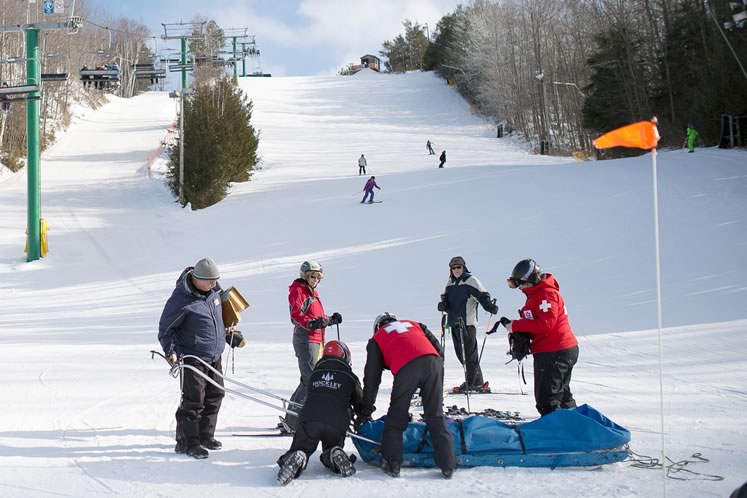
The patrollers put their experience into action when a young skier was injured during a school outing. Photo by James MacDonald.
Every morning, before the hill opens to the public, patrollers conduct a sweep, looking for hazards such as downed branches or bare patches of grass or rocks. When it’s safe to allow skiers onto the hill, the patrollers signal to the lift operators. At the end of the day, the patrollers are the last ones down the hill as they make a final sweep.
For Kulevski, though, it isn’t the adrenalin rush that comes from responding to an emergency that makes it all worthwhile. It’s the day-to-day interactions with skiers.
“Sometimes it’s not an injury at all, but someone with a problem with their equipment. They see you on the hill in your uniform and they ask for help,” he said. “People are always appreciative of these things.”
Canadian Ski Patrol by the Numbers
The Canadian Ski Patrol is a nonprofit corporation with nine divisions across the country. The divisions are further subdivided into 59 zones. For the statistics-minded, here are more numbers related to the work the patrollers do.
- CSP volunteers across Canada: 5,000+
- Annual visits to Ontario ski resorts: 3.4 million
- Annual Ontario ER visits for skiing- and snowboarding-related injuries: 11,593
- Age group most likely to be injured: preteens and teens aged 10 to 19 (60% males)
- Cause of most injuries: falls, collisions with natural objects
- Percentage of injuries to upper limbs: 50
- Percentage of injuries to lower limbs: 22
- Percentage of injuries to heads: 12
- Percentage of head injuries that could be prevented by wearing a helmet: 29–60 (estimated)
- Percentage of Canadian skiers who wear helmets: 83 (estimated)
- Number of provinces with mandatory ski-helmet laws: 1 (Nova Scotia)
Source: Ontario Injury Compass, January 2010, published by the Ontario Injury Prevention Resource Centre.
For more information about the Canadian Ski Patrol and how you can get involved, see skipatrol.ca.
Related Stories
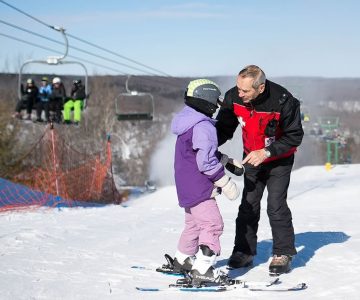
A Day on the Slopes at Hockley Valley
Nov 22, 2017 | | LeisurePhotographer James MacDonald visited Hockley Valley Resort, shadowing the patrollers who keep skiers safe.
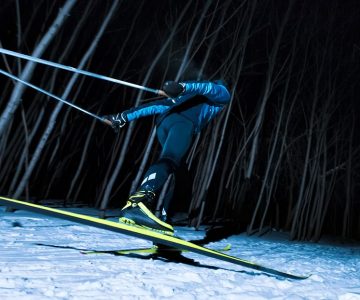
Cross-country Skiing
Nov 22, 2017 | | Good SportNight skiing, lit trails at Monora Park add magic to a cross-country outing.
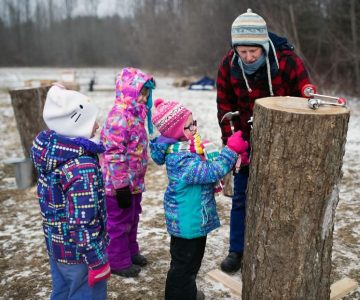
Let It Snow: Try These 10 Kids’ Winter Activities
Nov 22, 2017 | | LeisureEmbrace the season with snow tubing, tuning into nature or warming up indoors with a zany DIY parlour game.
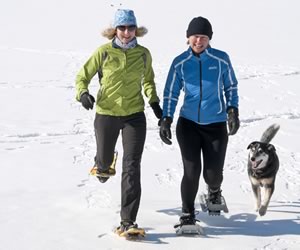
Off-trail on Snowshoes
Nov 21, 2011 | | Good SportWe’d warmed up with a short hike down to a kettle lake covered in untrodden snow. We couldn’t resist the temptation to make tracks, so we crossed the lake enjoying the silence and the warm sunshine.








